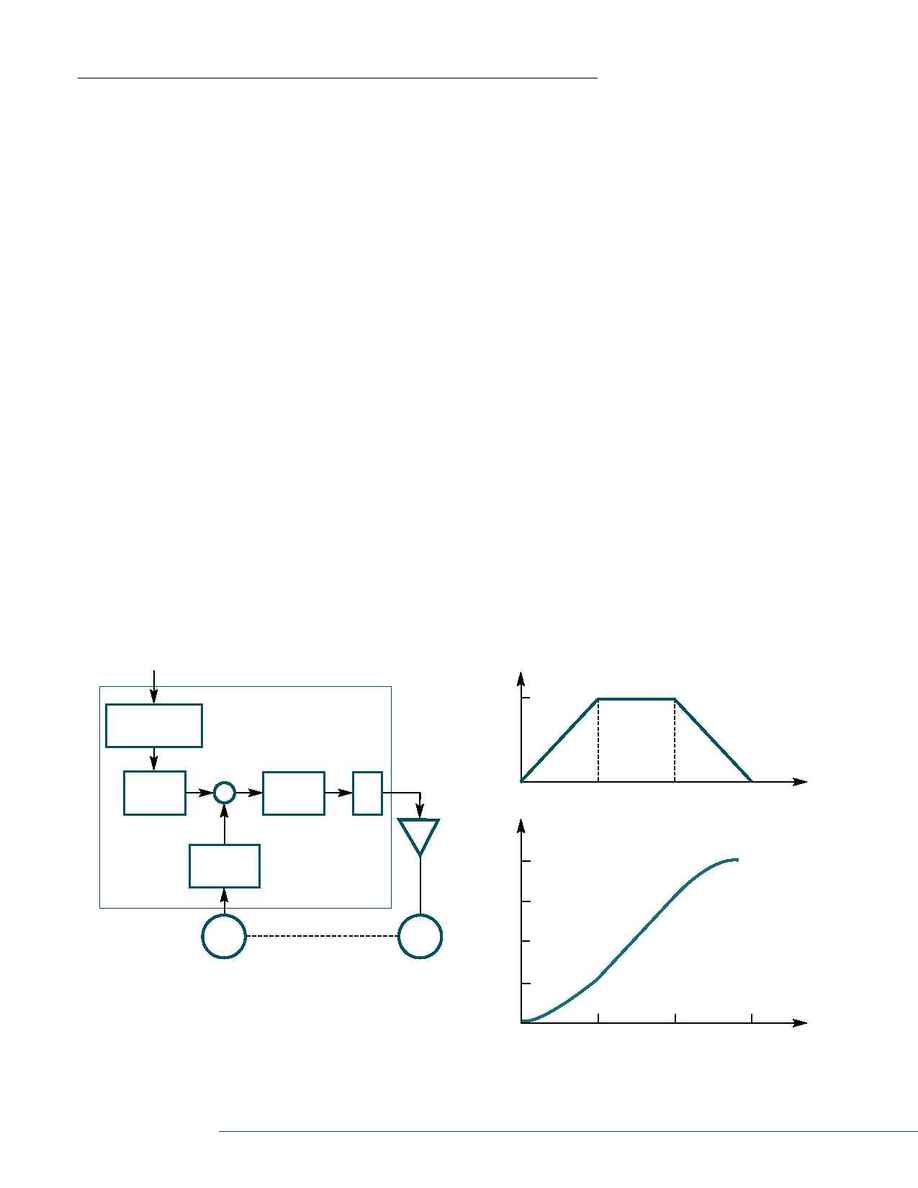
Technical References
System Elements
Motion Controllers
The motion controller performs the intelligent tasks of the system as
shown in the block diagram below.The basic tasks of the motion
controller include:
s
Decoding position feedback
s
Generating the desired position (profiling)
s
Closing the position loop
s
Stability compensation
The most fundamental function of the controller is to decode the
motor position and to close the loop.The motor position C is deter-
mined from the feedback signal (often an incremental encoder) and
compared with the desired or reference position R.The difference of
R-C is known as E, the position error.
The objective of the controller is to reduce the value of the posi-
tion error E to a minimum without causing system oscillations.To
achieve this, the controller often includes a stabilizing filter whose
output is applied via the digital-to-analog converter (DAC) to the
amplifier and the motor.
The most common type of stabilizing filter is proportional-inte-
gral-derivative or PID.The proportional term is for speed of response.
The derivative term provides stability and damping.The integral
term is for system accuracy.Properly tuning a servo system for opti-
mum performance involves adjusting the proportional, integral, and
derivative coefficients or KP, KI, and KD.
The motion controller also performs "profiling" functions, gen-
erating a time-dependent position function R(t), which corre-
sponds to the required velocity profile. In the velocity profile
shown below, the motion time of 150 msec is divided equally
between the acceleration, slew, and deceleration.The slew velocity is
100,000 count/sec and the total displacement is 10,000 counts.
Typically, the motion requirements are specified by the host in
terms of the total distance, slew speed, and acceleration. It
remains for the controller to generate the position profile R(t)
shown as a time-dependent function. Since the motor position C
follows R, the generation of the profile R controls the motion path
and rate. In addition to the basic tasks described above, an
advanced motion controller may perform high-level functions such
as processing commands from a host computer, program sequenc-
Elements of a Motion Controller
Desired Velocity Profile (a) and Corresponding Position (b)
MOTION
PROFILE
DAC
FILTER
POSITION
DECODER
MOTOR
AMP
ENCODER
COMMUNICATION
R
C
X
E
M
E
+
-
MOTION CONTROLLER
10000
7500
5000
2500
0
0
50
100
150 TIME
(ms)
POSITION
(counts)
0
50
100
150 TIME
(ms)
(b)
(a)
VELOCITY
(counts/sec)
100000
www.galilmc.com
/
Galil Motion Control, Inc.
3
